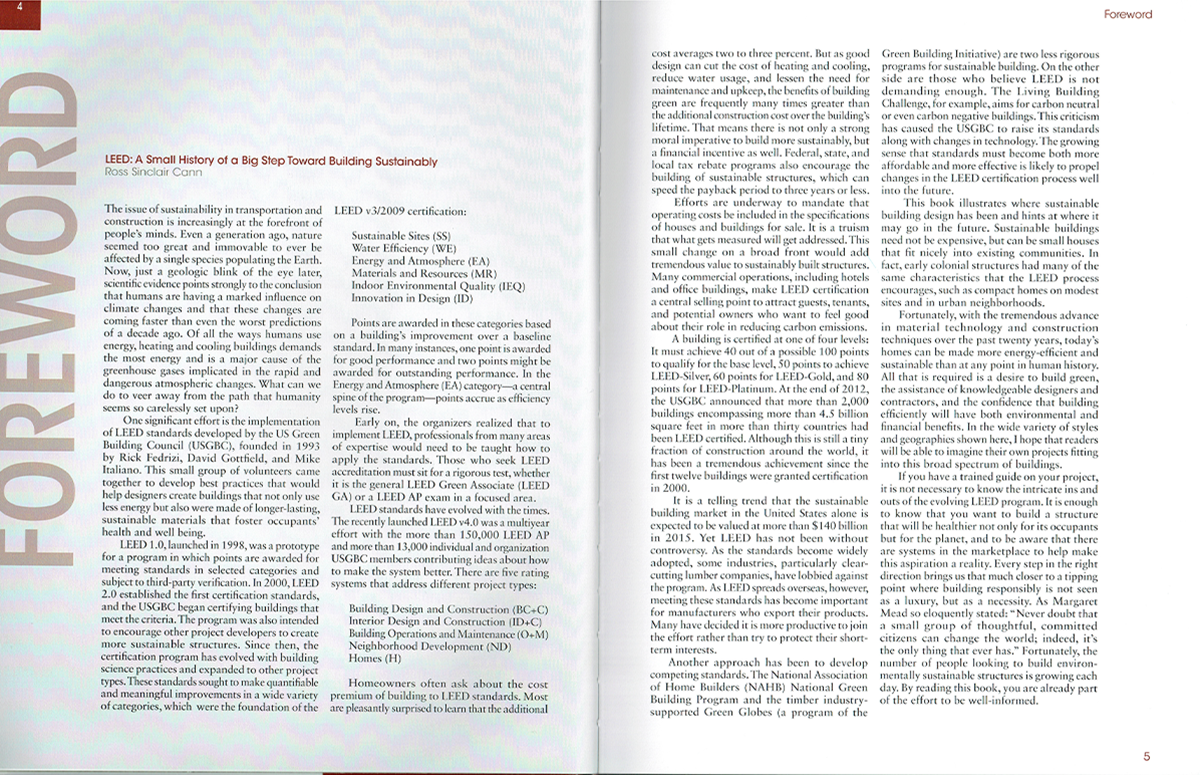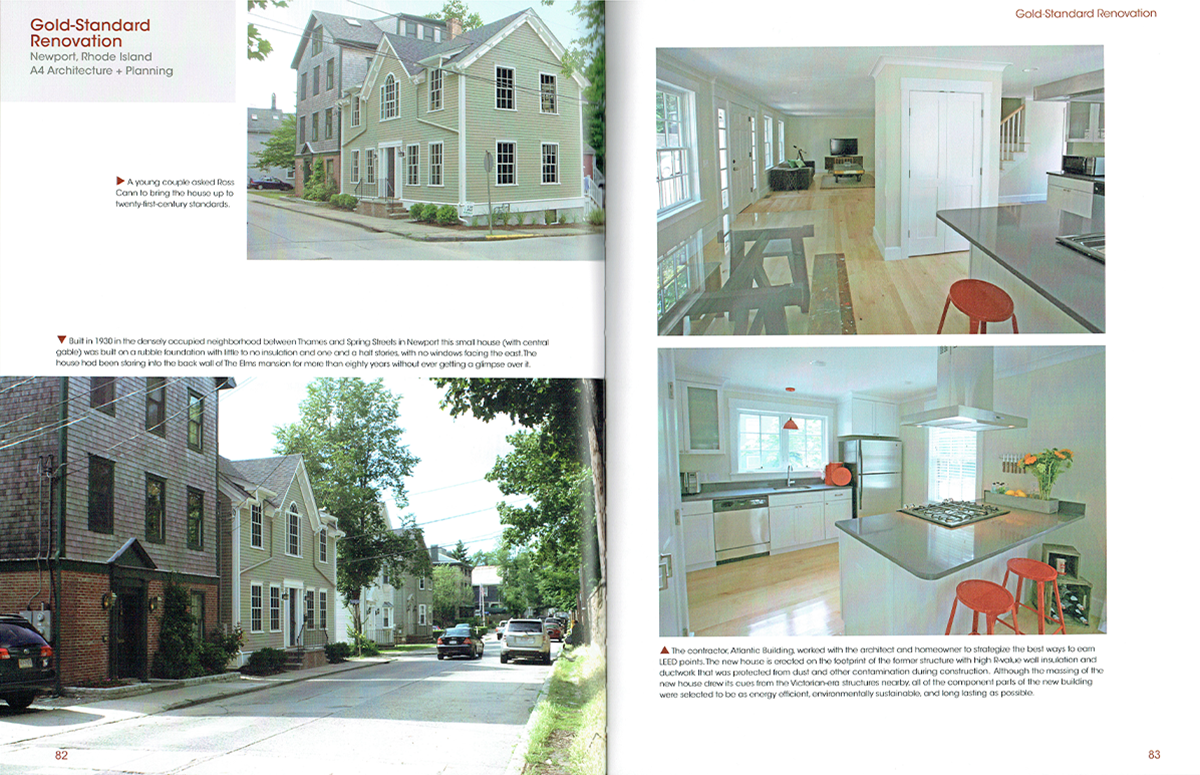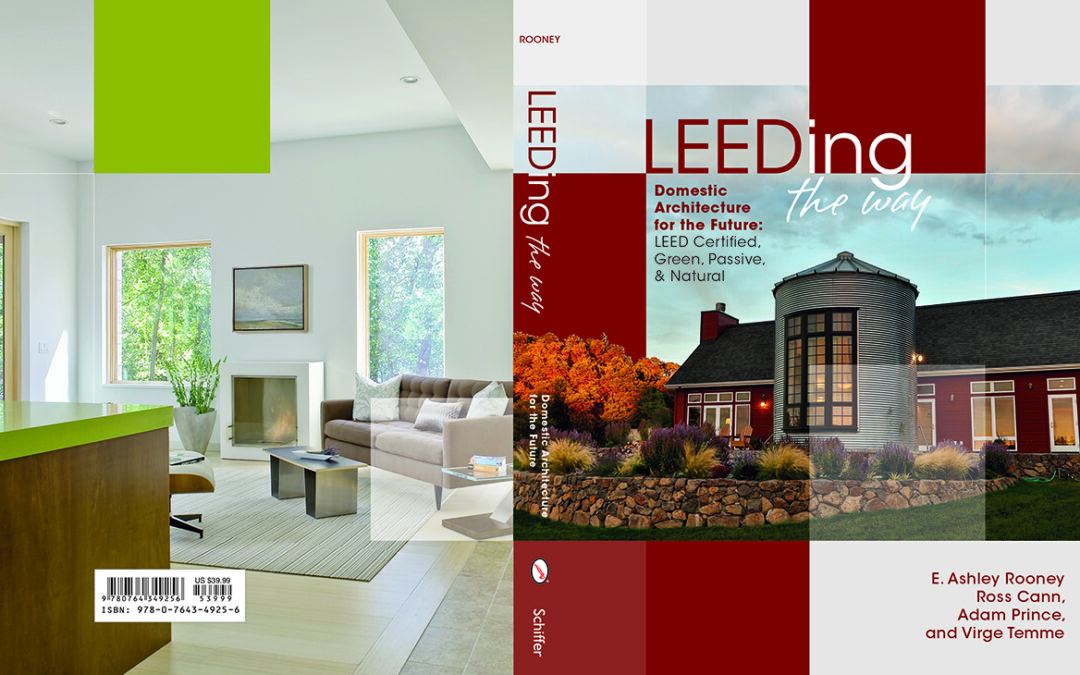LEED-ing the Way – Cover Page
The first step in making buildings more sustainable is to establish and then encourage best practices. In 1993 the U.S. Green Building Council, spearheaded by Natural Resource Defense Council scientist Robert K Watson, established the first Leadership in Energy and Environmental Design (LEED) certification process. Since that time the LEED certification process has spread around the world and more than 60,000 buildings have been approved for recognition at one of the follow levels: Certified, Silver, Gold, and Platinum.
One of the challenges of applying the LEED certification process early on was that many individuals imagined that sustainable houses would look dramatically different and be much more expensive to build, neither of which is actually true. In 2014, as a means of counteracting this misconception, Ross Cann of A4 Architecture reached out to architectural book author E. Ashley Rooney to produce a high-quality book showing that LEED certified houses could be built in a wide variety of styles and locations across the United States. This suggestion led to the creation of LEED-ing the Way, Domestic Architecture for the Future. Ross Cann was listed as a co-author on the project and contributed photographs of several projects to the 192-page large font coffee table book. The book includes hundreds of high-quality photographs of dozens of different projects, ranging from small to large, historic to modern, and simple to elaborate. The book is still available in both new and used versions on Amazon and other booksellers with a very high 4.8/5.0 rating.

LEED-ing the Way – Foreword
The LEED certification process has continued to evolve since the time LEED-ing the Way was originally published, and several other third-party certifications like WELL, Green Globes, and others have sprung up to compete and push LEED certification to higher levels of excellence. The LEED program is still predominant as the oldest and most widely recognized sustainable design and building standard.

LEED-ing the Way – Skyline Residence
While the LEED certification process involves a little more planning and paperwork, designing and buildings to “LEED Certified” standard is about the same cost as normal building and pays the owner a dividend in lower energy costs and a healthier environment than they would otherwise get.

LEED-ing the Way – Gold-Standard Renovation
The global climate crisis is something that everyone living in a developed country has been at least indirectly responsible for. Hopefully, through smarter, more sustainable design and building practices, everyone can help solve or alleviate the climate crisis in the future. Creating homes that are LEED certified is one very positive way to help make that possible.
Ross Cann, RA, AIA, LEED AP, who lives and works in Newport, RI, is an author, historian, and Founding Principal of A4 Architecture. He holds honors degrees in Architectural History and Design from Yale, Cambridge, and Columbia Universities and has taught at numerous institutions as well. He earned the lifetime designation of “LEED Accredited Professional” in 2010.
